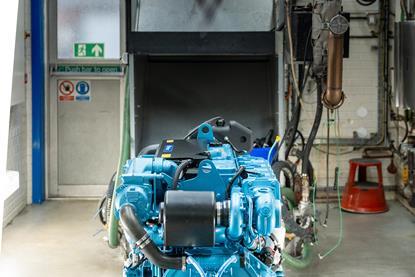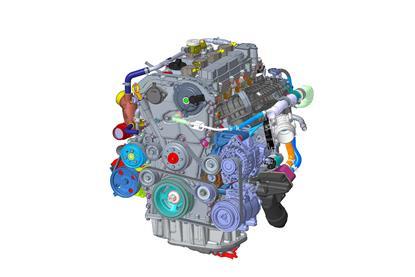Sector: Inboard engines
Stay informed about the latest developments in inboard engines through detailed sector analysis, including trend updates, company news, and recent launches. Discover innovations that are improving performance, efficiency, and emissions.
Latest Sector Report
Strategies and collaborations for sustained, long-term growth
New technologies, strategies and collaborations are positioning the inboard engine segment for sustained, long-term growth
2026 Miami Innovation Awards entry deadline is Tuesday, January 6
Supra Boats, Volvo Penta collaborate to redefine towboat performance
NZ firm aims to spark power segment
Catana’s YOT launches first inboard power catamaran
Mack Boring partners with Mercury
Yamaha Motor makes numerous management changes
Vision Marine Technologies to launch 180hp electric inboard
Volvo Group reports profitable Q2 despite headwinds
FPT Industrial names new Finnish distributor
Caterpillar Marine testing methane dual fuel engines
- Inboard engines
Amping up electric inboard propulsion
Inboard electric propulsion systems are returning better power-to-weight ratio as OEMs harness advances from all sectors of ‘e-mobility’. Meanwhile, fuel cell and hybrid technology is helping to eliminate range anxiety
- Inboard engines
Perkins’ new 175hp-245hp diesels
Meeting all the latest emissions standards and with an eye to the future, the new range of marine diesels from UK-based Perkins pack plenty of options
- Inboard engines
e-Methanol tender scheme to roll out supply
A scheme to connect e-methanol users with bulk producers across the EU is seen as a pathway to securing long term supplies for the marine industry
- Inboard engines
WinGD to introduce first enthanol two-stroke engine
After a decade of research, the Swiss company WinGD will be offering an ethanol-fuelled marine engine after the successful adoption of a methanol version
- Inboard engines
Ecomar’s modular Kairos 350hp e-motor
Designed for long periods of use, the new M460kW electric motor from Kairos is claimed to be easy to fit with a high payback value in terms of saved fuel
- Electrification
Space-saving inboards, outdrives and pods
Greatly assisted by advances in the automotive and aeronautical sectors, marine electric inboards continue to benefit from more compact motors and better management systems
- Inboard engines
Inboards: Mid Range - The best is yet to come
New investments in achieving greater efficiency and sustainability – bolstered by a strengthening focus on service – are driving growth among inboard and sterndrive builders serving the core of the leisure boat market
- Inboard engines
Inboards: High Power - Building for today and tomorrow
New yacht engines boast increasingly futureproof design elements to stay ahead of rapidly evolving emissions regulations
- Inboard engines
World’s first 2.0 litre direct injection ammonia engine announced
Korean engineers have unveiled a working prototype of a 2.0 litre engine said to have vast potential in a range of applications, including recreational boats
- Inboard engines
Sales of methanol engines increases
MAN Energy Solutions reports a healthy uptake in sales of methanol powered engines from newbuild and retrofit shipbuilders
- Inboard engines
MAN ES to develop four-stroke ammonia marine engine
MAN Energy Systems progressing its earlier work on a two-stroke dual-fuel engine powered mainly by ammonia
Inboard engines News
- News
2026 Miami Innovation Awards entry deadline is Tuesday, January 6
Innovations across 21 categories to be honoured at 2026 Miami International Boat Show
- News
Supra Boats, Volvo Penta collaborate to redefine towboat performance
The integration of Volvo Penta’s Forward Drive technology into Supra’s SE model delivers sterndrive-like handling and exceptional wake capabilities
- News
Mack Boring partners with Mercury
US marine engine distributor announces new collaboration with Mercury Marine as authorised Mercury Engine Power Center


























 LinkedIn
LinkedIn X / Twitter
X / Twitter Facebook
Facebook Email us
Email us




